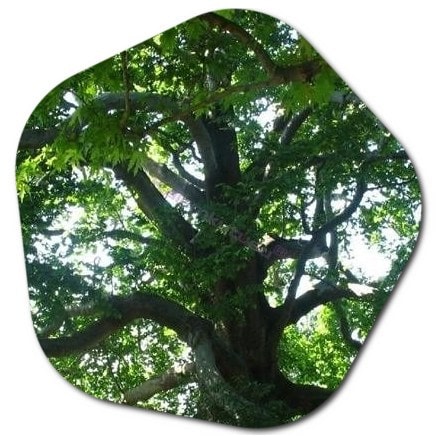What is the most common tree in Zimbabwe?
One of the most common and widespread trees in Zimbabwe is the Mopane tree (Colophospermum mopane). It is a characteristic tree of the Zimbabwean savannah woodlands and can be found throughout the country. The Mopane tree is known for its distinctive butterfly-shaped leaves and its ability to adapt to harsh, arid conditions.
Mopane trees are highly resilient and can withstand drought, fire, and grazing pressure. They often dominate vast areas of the Zimbabwean landscape, forming extensive woodlands. The tree provides valuable resources for both humans and wildlife. Its leaves serve as fodder for herbivores, and the tree’s wood is used for various purposes such as construction, fuelwood, and making furniture.

Additionally, Mopane woodlands are crucial habitats for a diverse array of wildlife species, including elephants, giraffes, antelopes, and numerous bird species. These woodlands contribute significantly to the ecological balance and biodiversity of Zimbabwe’s ecosystems.
Where are indigenous trees found in Zimbabwe?
Indigenous trees can be found throughout Zimbabwe, occurring in various vegetation zones and habitats. Here are some of the areas where indigenous trees are commonly found in the country:
- Savannah Woodlands: Indigenous trees are prevalent in the savannah woodlands, which cover extensive areas of Zimbabwe. This vegetation type is characterized by open grasslands interspersed with scattered trees. Tree species such as the Mopane tree, Baobab, Acacias, Combretum, and Terminalia are commonly found in these woodlands.
- Miombo Woodlands: The miombo woodlands are another significant habitat for indigenous trees in Zimbabwe. These woodlands consist of dense stands of deciduous trees and are widespread in central and western parts of the country. Brachystegia and Julbernardia species, such as the Zambezi Teak, are prominent in these woodlands.
- Eastern Highlands: The Eastern Highlands of Zimbabwe, particularly in montane forests, harbor a rich diversity of indigenous trees. This region, characterized by higher elevations and cooler climates, supports tree species like Yellowwood, Stinkwood, Wild Banana, and various hardwoods.
- Riparian Zones: Riparian zones, along the banks of rivers and in wetland areas, provide suitable habitats for indigenous trees in Zimbabwe. Tree species such as Fig trees, Ebony, Mahogany, and others that thrive in moist conditions can be found in these areas.
- Mountain Ranges: Zimbabwe’s mountain ranges, such as the Nyanga and Chimanimani Mountains, are home to unique indigenous trees adapted to higher altitudes. Montane forests in these regions host tree species like Red Stinkwood, White Stinkwood, and various conifers.
It’s important to note that the distribution of indigenous trees in Zimbabwe can vary based on factors like climate, soil type, and altitude. The country’s diverse ecosystems provide habitats for a wide range of indigenous tree species, contributing to its overall biodiversity and ecological balance.
What are the indigenous timber trees in Zimbabwe?
Zimbabwe is known for its valuable indigenous timber trees that provide high-quality wood for various purposes. Here are some of the prominent indigenous timber trees found in the country:
- Zimbabwe Teak (Baikiaea plurijuga): Also known as Rhodesian Teak, Zimbabwe Teak is a highly prized timber tree native to Zimbabwe and other southern African countries. It produces a durable and attractive hardwood that is used in construction, furniture making, flooring, and decorative woodwork.
- Mukwa (Pterocarpus angolensis): Mukwa is a hardwood tree species found in Zimbabwe’s woodlands. It is known for its durable and termite-resistant wood, which is used for furniture, flooring, joinery, and crafting musical instruments.
- Munhondo (Brachystegia spiciformis): Munhondo, also known as Mountain Acacia, is a tree species found in the eastern parts of Zimbabwe. It produces a dense hardwood that is highly valued for its strength and durability. Munhondo timber is used in construction, furniture making, and as fuelwood.
- Chanfuta (Afzelia quanzensis): Chanfuta is a large tree species native to Zimbabwe and other African countries. Its timber is highly regarded for its strength, durability, and resistance to pests and rot. Chanfuta wood is commonly used for heavy construction, flooring, and high-quality furniture.
- Zebra Wood (Diospyros mespiliformis): Zebra Wood is a medium-sized tree species native to Zimbabwe. It gets its name from the distinctive zebra-like pattern on its timber. The wood is highly valued for its ornamental qualities and is used for furniture making, cabinetry, and decorative purposes.
These are just a few examples of the indigenous timber trees in Zimbabwe. The sustainable harvesting and management of these trees are crucial to maintain their populations and ensure the long-term availability of valuable timber resources. Zimbabwe Trees >>





